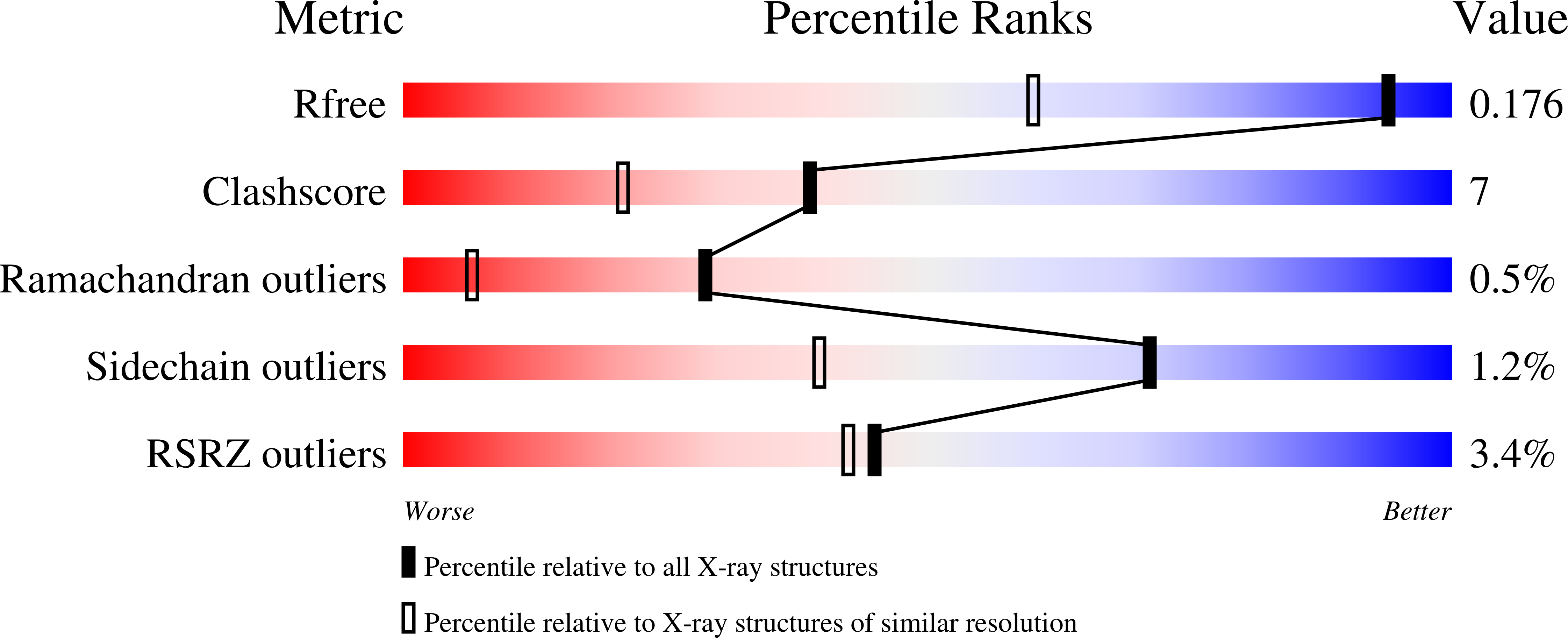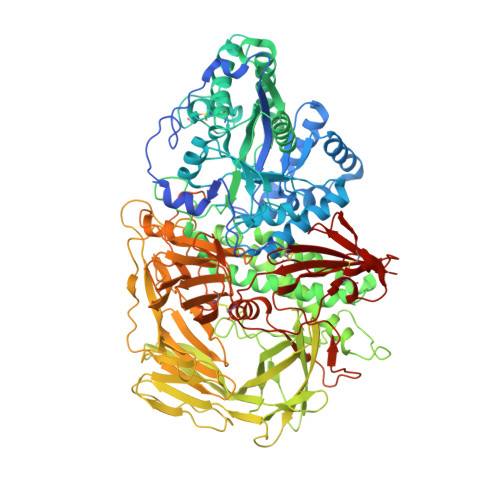Evaluation of docking programs for predicting binding of Golgi alpha-mannosidase II inhibitors: a comparison with crystallography.
Englebienne, P., Fiaux, H., Kuntz, D.A., Corbeil, C.R., Gerber-Lemaire, S., Rose, D.R., Moitessier, N.(2007) Proteins 69: 160-176
- PubMed: 17557336
- DOI: https://doi.org/10.1002/prot.21479
- Primary Citation of Related Structures:
2F18, 2F1A, 2F1B - PubMed Abstract:
Golgi alpha-mannosidase II (GMII), a zinc-dependent glycosyl hydrolase, is a promising target for drug development in anti-tumor therapies. Using X-ray crystallography, we have determined the structure of Drosophila melanogaster GMII (dGMII) complexed with three different inhibitors exhibiting IC50's ranging from 80 to 1000 microM. These structures, along with those of seven other available dGMII/inhibitor complexes, were then used as a basis for the evaluation of seven docking programs (GOLD, Glide, FlexX, AutoDock, eHiTS, LigandFit, and FITTED). We found that small inhibitors could be accurately docked by most of the software, while docking of larger compounds (i.e., those with extended aromatic cycles or long aliphatic chains) was more problematic. Overall, Glide provided the best docking results, with the most accurately predicted binding around the active site zinc atom. Further evaluation of Glide's performance revealed its ability to extract active compounds from a benchmark library of decoys.
Organizational Affiliation:
Department of Chemistry, McGill University, Montr¨¦al, Qu¨¦bec H3A 2K6, Canada.





















